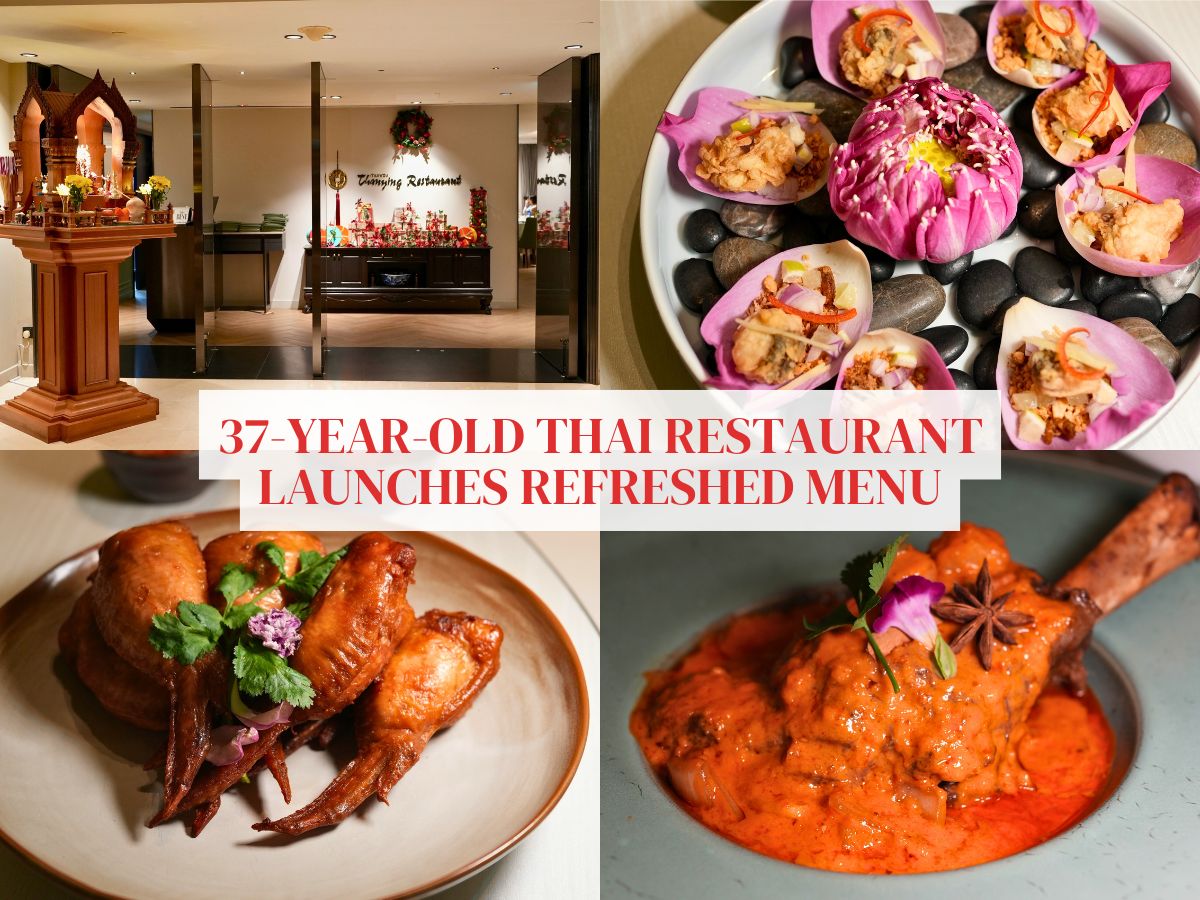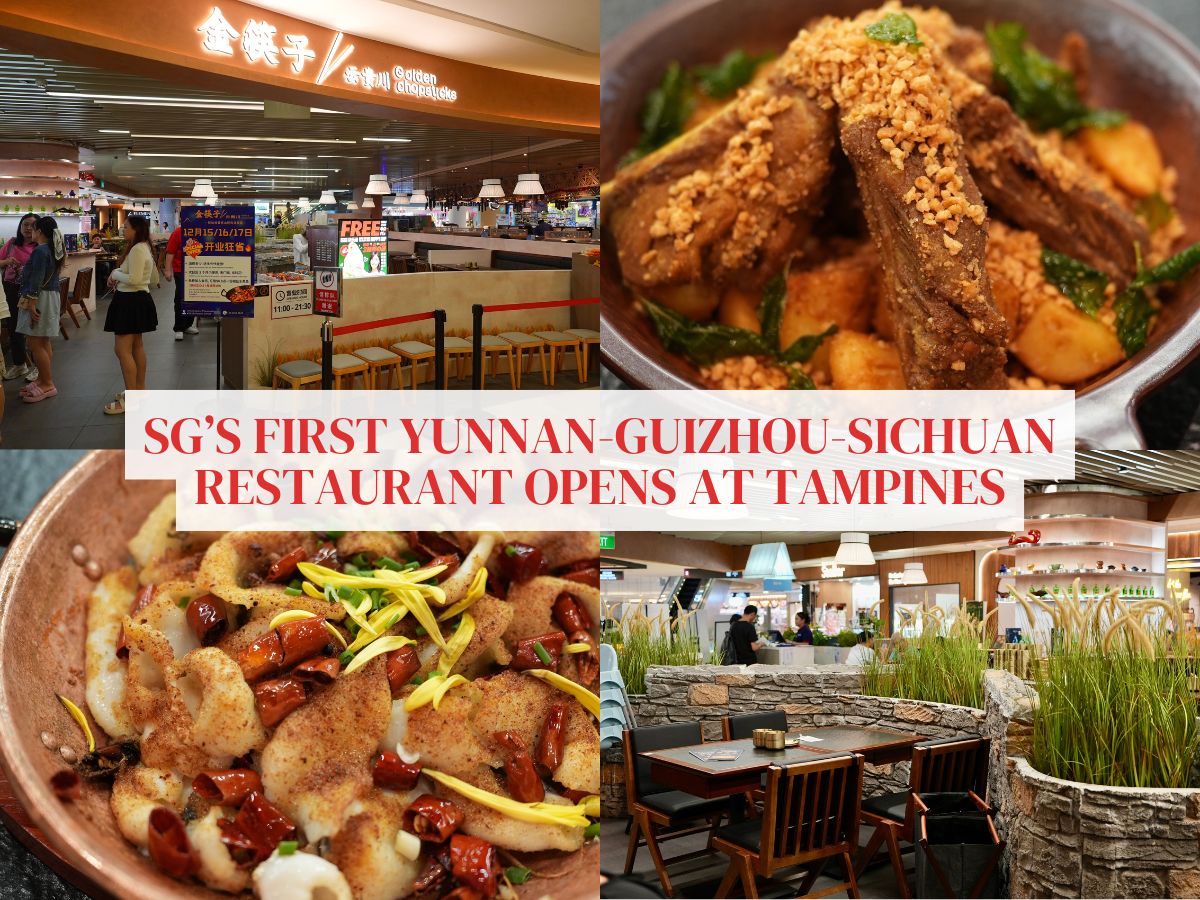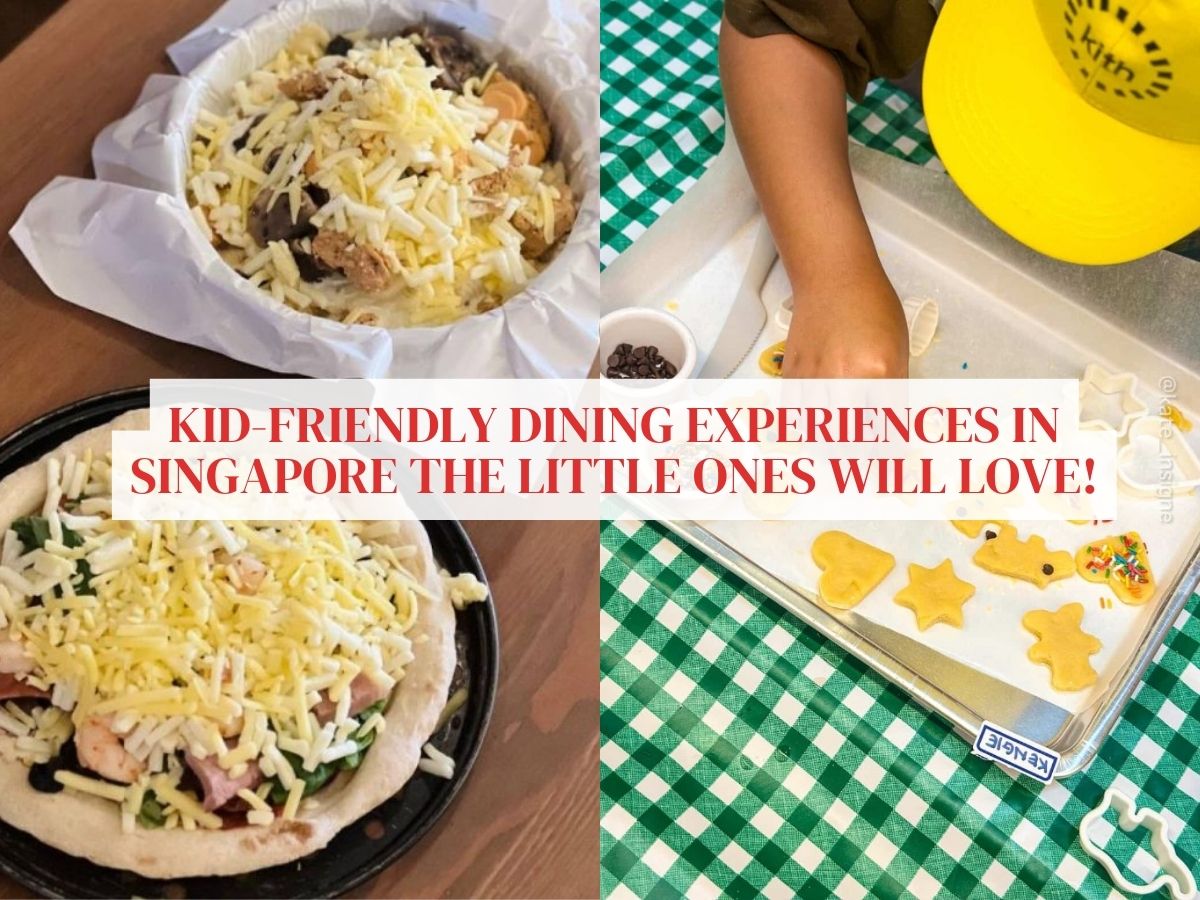How to Make: Kalguksu or Korean knife noodles, as they do at Seoul Noodle Shop
How to Make is a HungryGoWhere series spotlighting popular foods in Singapore and the work that goes into making them.
I vividly remember my first brush with kalguksu — I was a university exchange student in Seoul, trying to make the most of my weekend trip to the city of Jeonju, the largest city in the North Jeolla province in Seoul.
Talking to the locals and an online search brought me to one of Jeonju’s oldest restaurants, Veteran Kalguksu, which sits in Jeonju Hanok Village, and has been around since 1977.
The shop served up hearty bowls of kalguksu (or “knife noodles” in Korean), and its version came with a thick, milky broth, topped with seaweed, chilli powder, and perilla seeds.
As a homesick student, the comfort that a bowl of noodles and soup brought was etched firmly in mind, and I’d never found something quite similar in Singapore, though there were Korean restaurants that did serve variations of the dish.
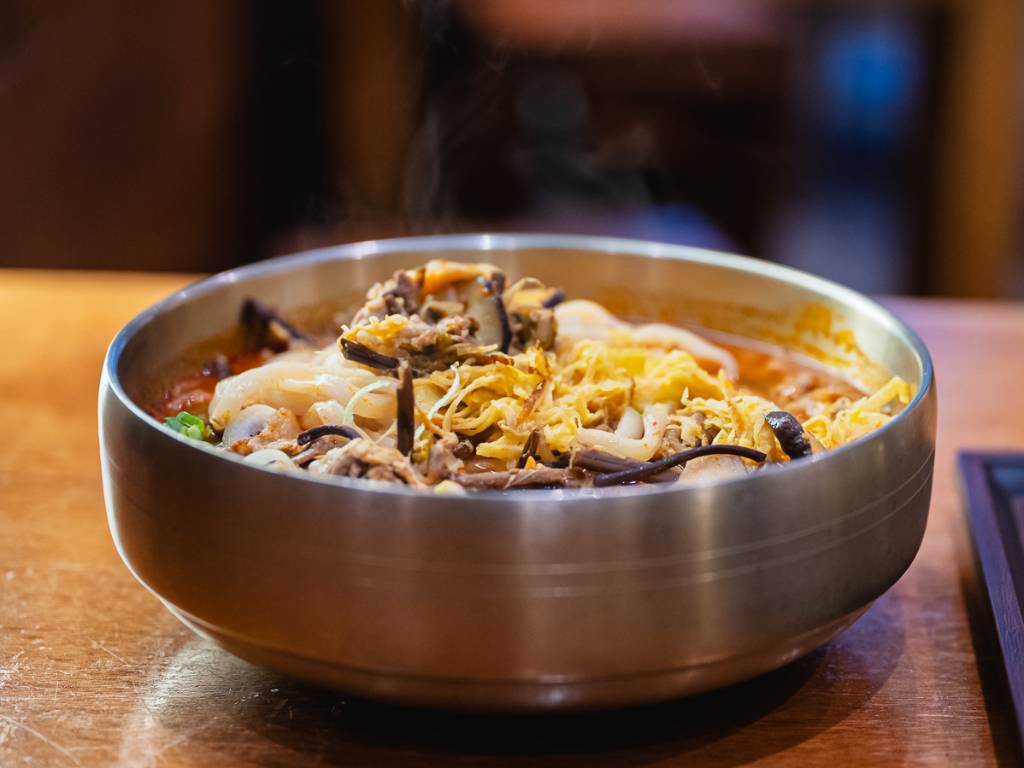
Until Seoul Noodle Shop arrived in Singapore in July last year.
The brand, which began first in Hong Kong by the Gold Moon restaurant group, first had a pop-up at Tanglin Mall, which drew loads of attention, thanks to the presence of Korean personality Hong Seok-cheon, and celebrity chef Lee Won-il at its opening.
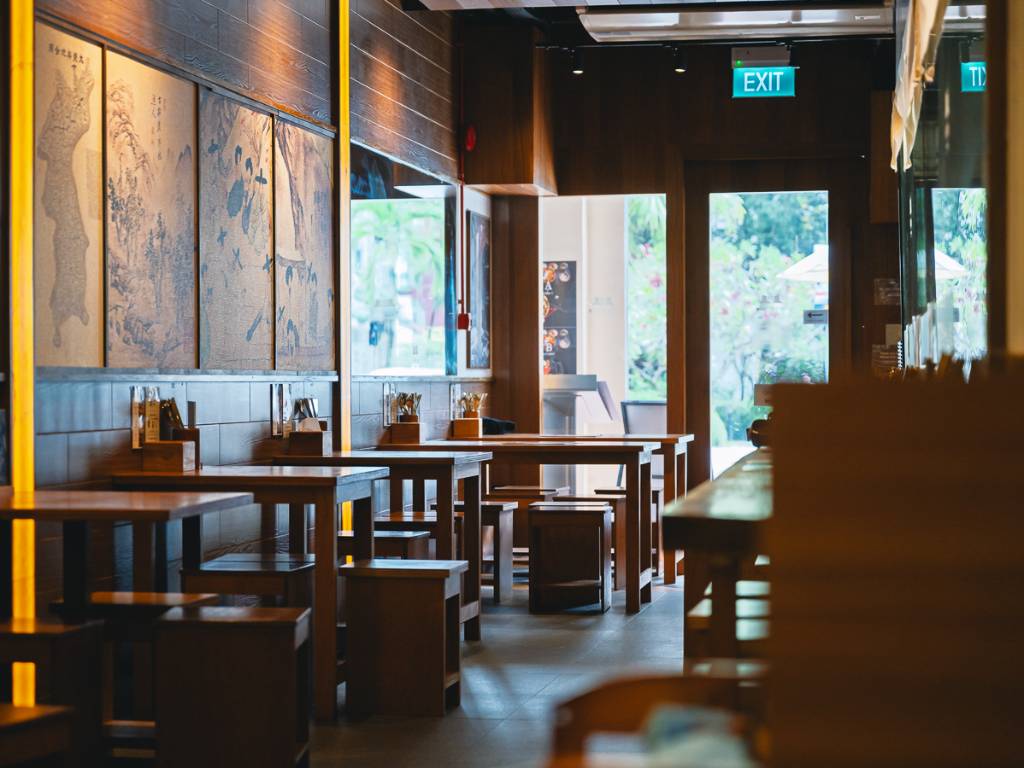
The concept later found a permanent home at the bustling Tanjong Pagar Road, where it still draws queues at mealtimes. The brand has also stayed on at Tanglin Mall, while subsequently branching out into the Suntec City and Junction 8 malls.
With a staggering four outlets in a span of less than one year, especially in an economy where restaurants are shutting down, and locals are eating out a lot less, we couldn’t help but wonder, what exactly is this dish about? And why do Singapore diners love it so much?
What is kalguksu?
The name “kalguksu” translates more directly into “knife noodles” in Korean (“kal” meaning “knife”, and “guksu” referring to noodle dishes).
The noodles, which are usually handmade from wheat flour, are cut into thin strips, rather than pulled by hand.
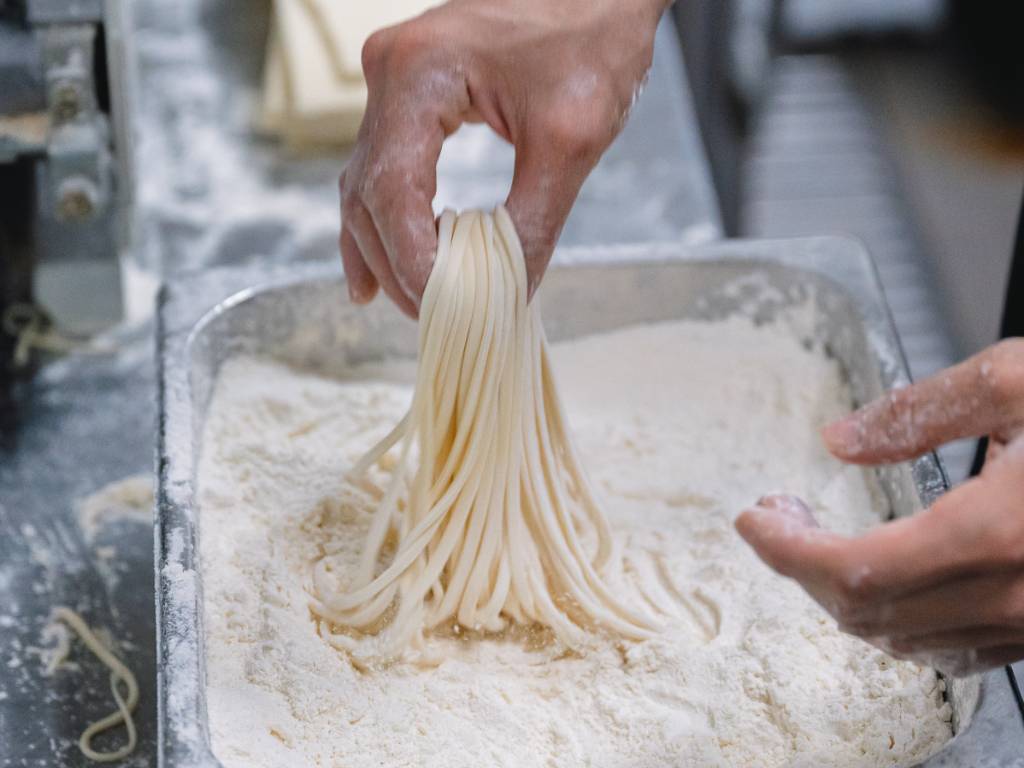
After boiling, the chewy noodles are then served in a bowl of piping-hot broth, and are topped with ingredients, which can range from pork to seafood, and even vegetarian options.
The closest dish you’d find in Singapore is ban mian, also a form of cut noodles served in a broth. It is said to have originated from China, though there are differing stories on where it got the “ban” (which means “wooden board” in Chinese) in its name, from.
Ban mian is a dish that’s had an enduring appeal in Singapore — every food court or hawker centre would have at least one such stall — perhaps owing it being a simple, fuss-free, all-in-dish where you get carbs, a smattering of meat and vegetables in one bowl.
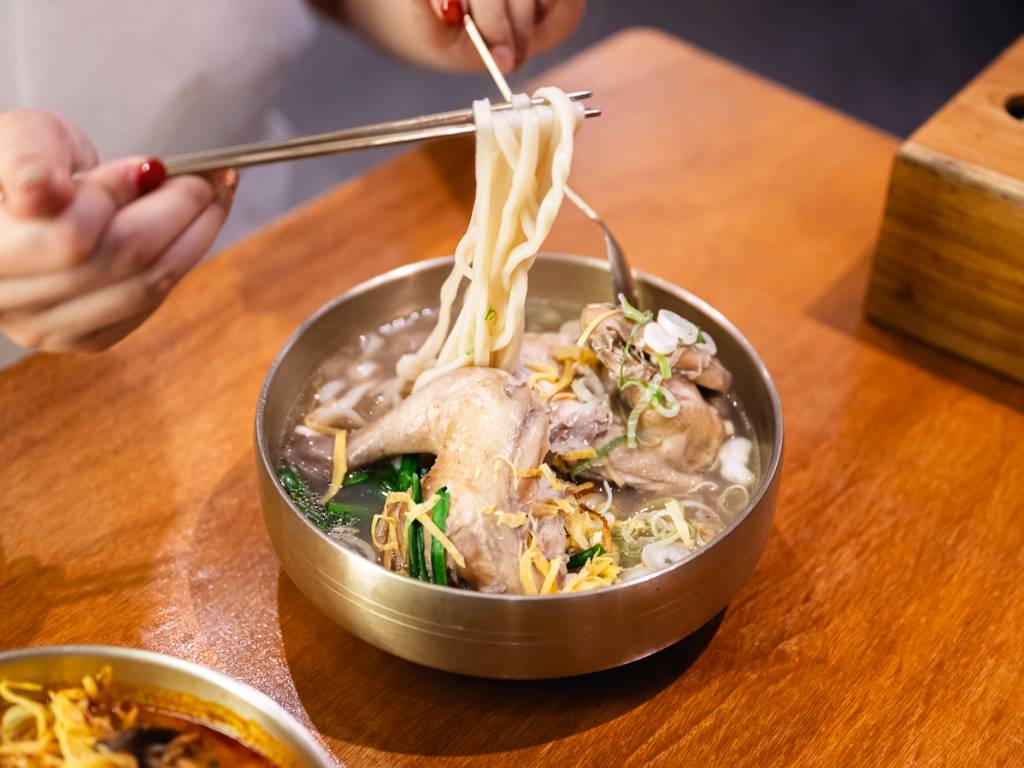
In the same vein, we can see kalguksu having the same allure with Singaporeans — comforting, filling and most importantly, embellished with different proteins so you can opt for whatever you feel like.
It wasn’t that there weren’t any kalguksu options in Singapore before Seoul Noodle Shop arrived in Singapore, though — Noodle Star K on the same stretch of Tanjong Pagar also hawks kalguksu, among other types of Korean noodle dishes.
But it’s safe to say Seoul Noodle Shop was easily the first in Singapore to specialise in this dish, serving up to 10 (at this point) variations and still introducing new flavours seasonally. Besides kalguksu, it also dishes out gukbap (Korean rice and soup) and shareable Korean dishes, such as pancakes.
Seoul Noodle Shop and its viral noodle bowls
While Seoul Noodle Shop has gone on to different areas of Singapore, it’s clear its Tanjong Pagar outlet is the brand’s most popular storefront when it comes to drawing in the masses, thanks to its convenient location in our very own unofficial “K-Town”.

Running the kitchen at Seoul Noodle Shop in Tanjong Pagar is its Korean executive chef Jacob Im, 27, who has been with the shop since it started operations here last year. He also trained at the brand’s original Hong Kong outlets.
Despite his young age, Jacob has been working in the kitchen for over five years, and has done stints at Japanese and Korean restaurants back home.
Jacob, who says he was inspired to step into the kitchen after he grew up watching his mother cook, tells us that everything at Seoul Noodle Shop is made from scratch.
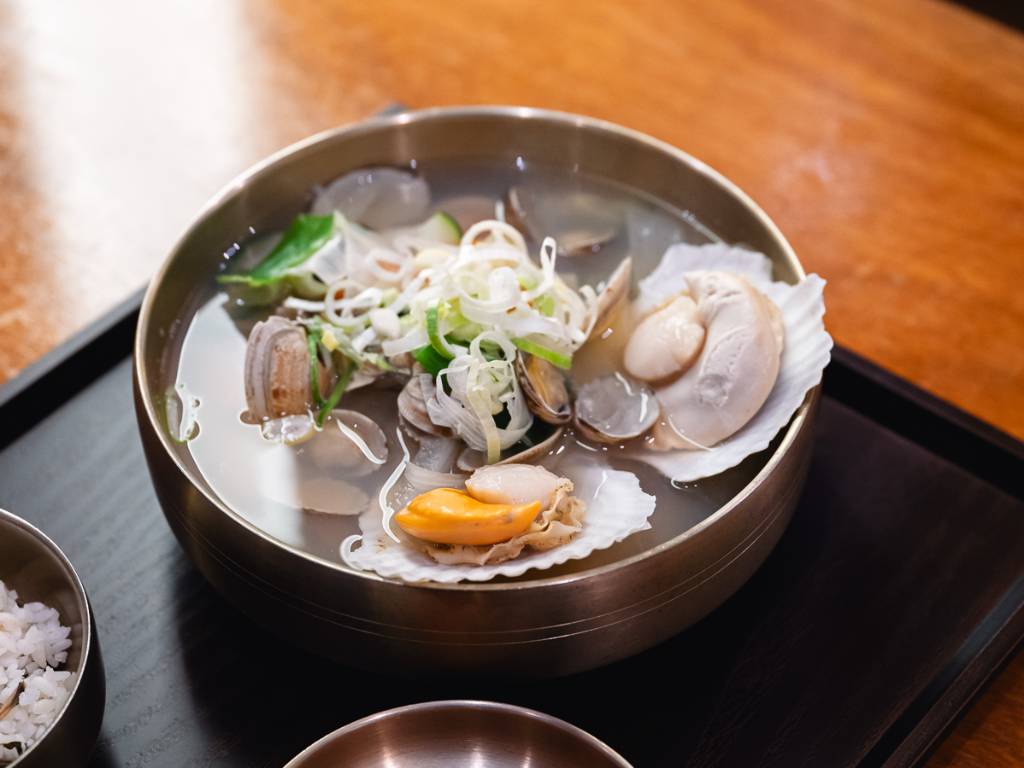
“In Korea, it’s quite common for restaurants to use pre-made noodles and broth, but here, we do every step, from the broth to the noodles,” he adds.
He’s been in Singapore for slightly under a year and is excited to continue bringing authentic Korean noodles to the local crowd.
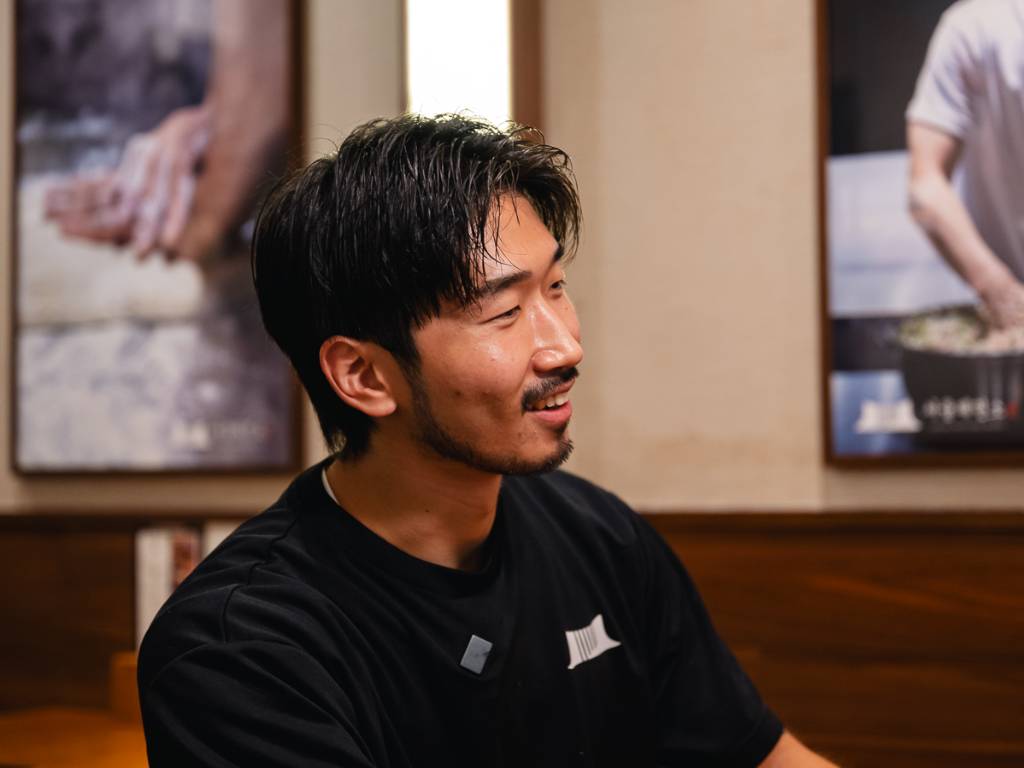
The boyish-looking, yet shy chef, also recently amassed more than 200,000 views on an Instagram reel showing him behind-the-scenes at the Seoul Noodle Shop outlet.
It took some prodding on our part, but he recalled a particularly memorable incident involving some guests who came all the way from Malaysia to visit the shop and him, after seeing the reels.
What he does share easily is his favourite of the many dishes he doles out daily: The pork bone spicy noodles (S$20.50), which is also one of the store’s bestsellers since it opened — it’s spicy, hearty and sports two big hunks of pork bone.

The spicy dish goes best with some soju, he quips.
We go behind the scenes to see how he whips up a bowl of kalguksu at Seoul Noodle Shop.
How to make kalguksu
First, up, the noodles — the ingredients are expectedly simple, involving just water, flour and salt.
These are mixed together into a dough, which is then left to rest overnight, making it easier to work with, smoother, and less likely to break.
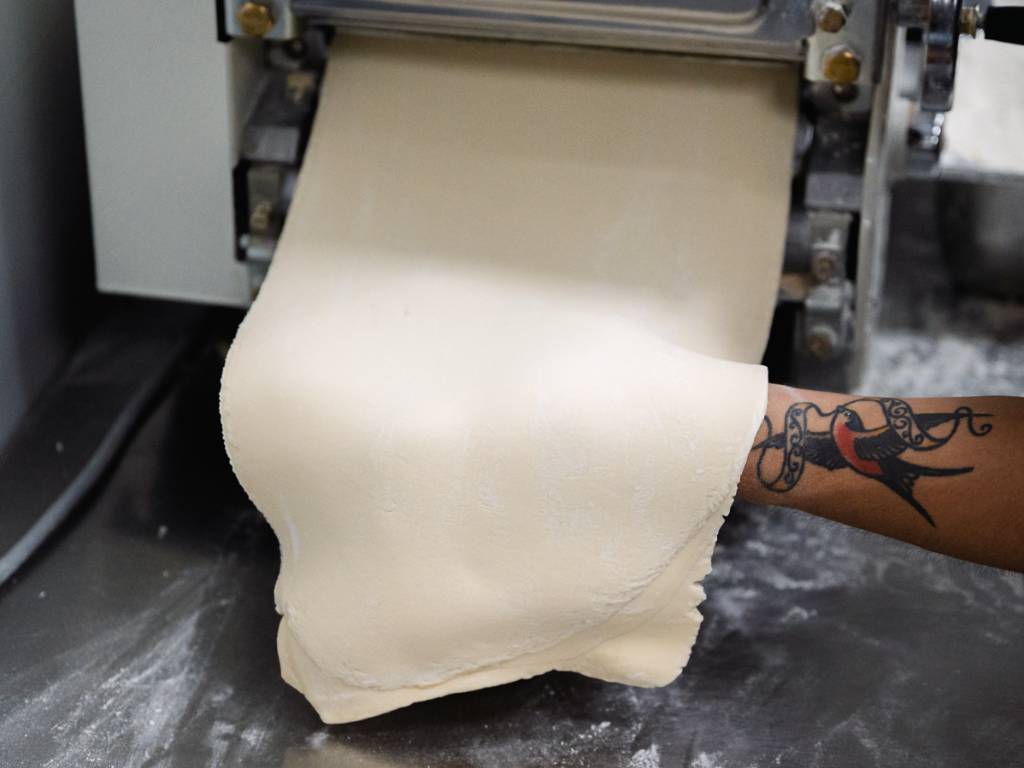
When the crew comes in the next day, they roll it flat three times through a machine to develop its signature chewiness.
The dough is then freshly cut first by hand, and then the machine into thinner strips, and then portioned for the day’s use.

While it is seemingly simple, this laborious process is repeated twice daily — once before they open in the morning, and once more at lunch — to ensure the batches are of optimal texture and flavour.
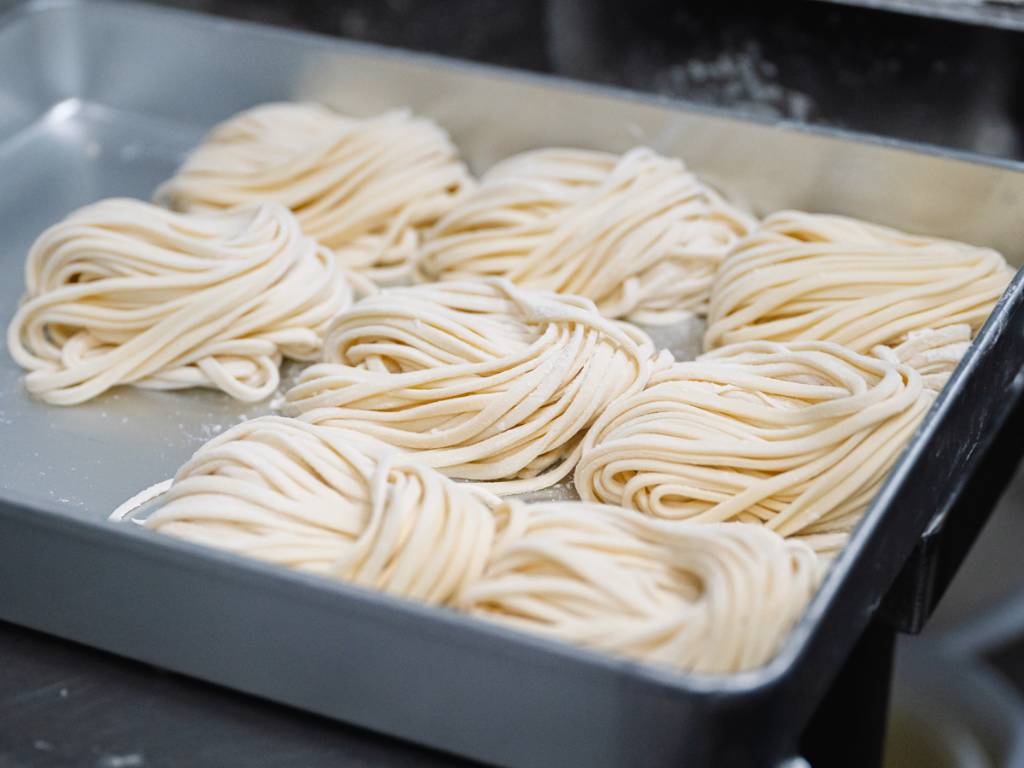
The labour-intensive broths
Much like the noodles, work on the broths begins a day ahead. The bones — be it pork or beef, depending on the broth they’re making — are soaked for at least a day in water to remove the blood.
Chef Jacob adds: “Removing the blood from the bones is important, not only to avoid impurities in the soup, but also to avoid the gamey smell you might get.”
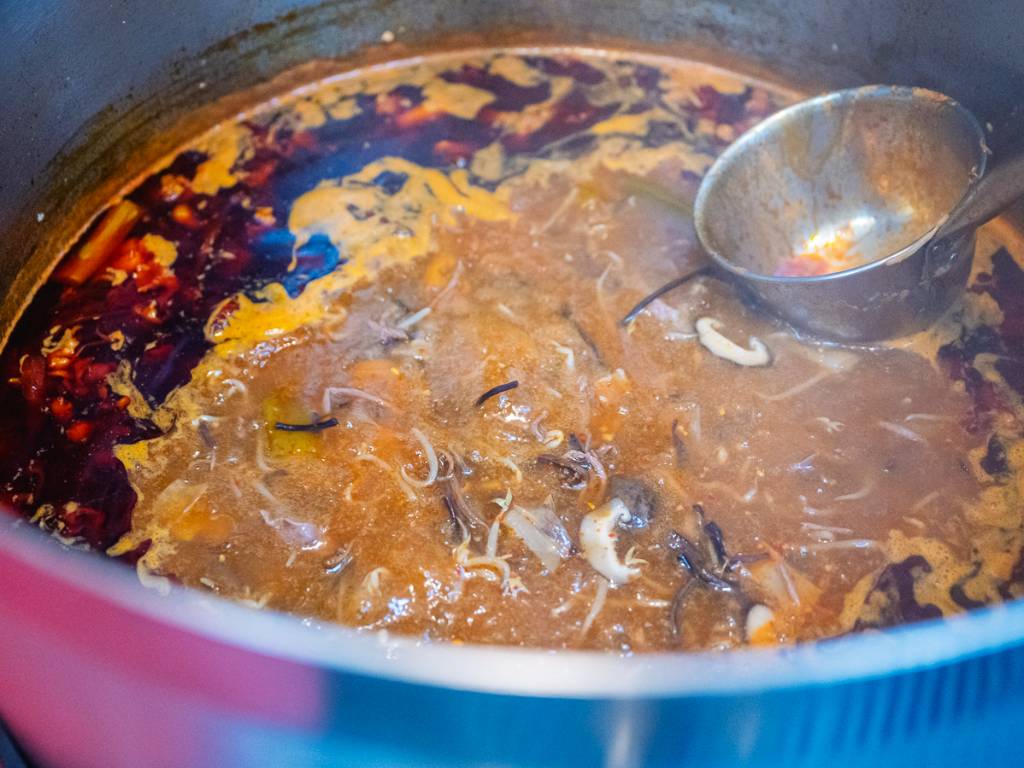
After the meat and bones are trimmed, they are then simmered for more than 12 hours together with various other ingredients, such as vegetables — this mix varies depending on the broth that is being prepared.
The crew keeps a close watch on all broths, ensuring that any semblance of impurities are skimmed off as they simmer, so that they stay clear and fresh-tasting.
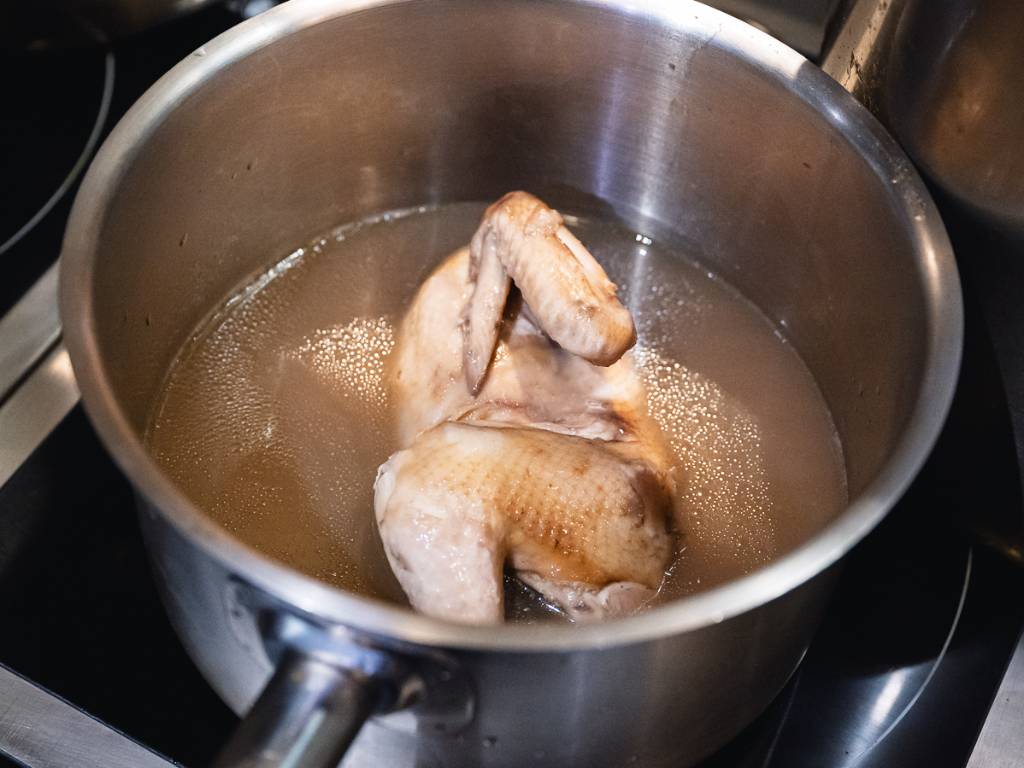
The chicken soup follows similar processes.
The chicken bones and feet are first cleaned thoroughly, before they simmer them with vegetables and spices for over 10 hours — a slightly shorter time than what the pork or beef soup would have taken, but still a lengthy process, nonetheless.
When we visited in late-April, the store had a total of eight broth bases they maintained daily, for its 10 kalguksu dishes.
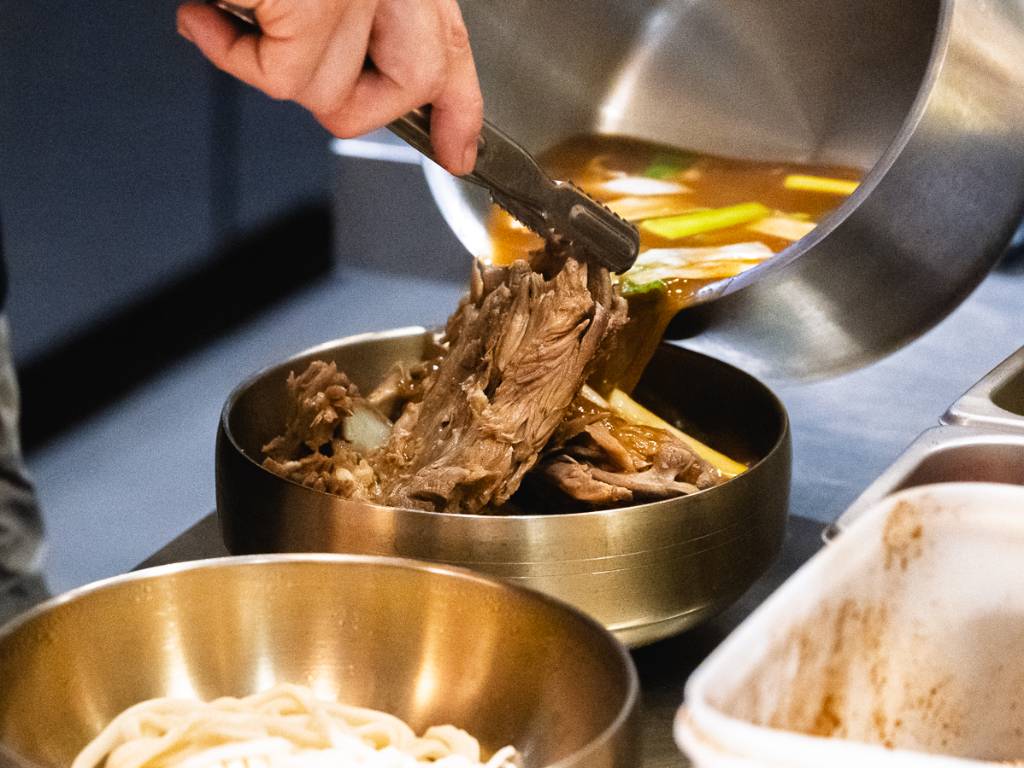
Jacob concedes that none of the broths are difficult to make in particular. “They’re just extremely time-consuming and require a lot of care and patience,” he adds.
Enjoying kalguksu
The next time you’re at Seoul Noodle Shop, it might not seem like such a long wait for your bowl of noodles to arrive at your table. But in reality, there’s hours of preparation behind its components — from the noodles, to the broth and its ingredients — to all come together in a each satisfying spoonful.

Sipping on the broth of both its pork bone spicy noodles and its yukgaejang noodles (spicy beef broth, S$18.50) it’s clear the time spent soaking the bones, followed by skimming the impurities over hours, wasn’t for naught.
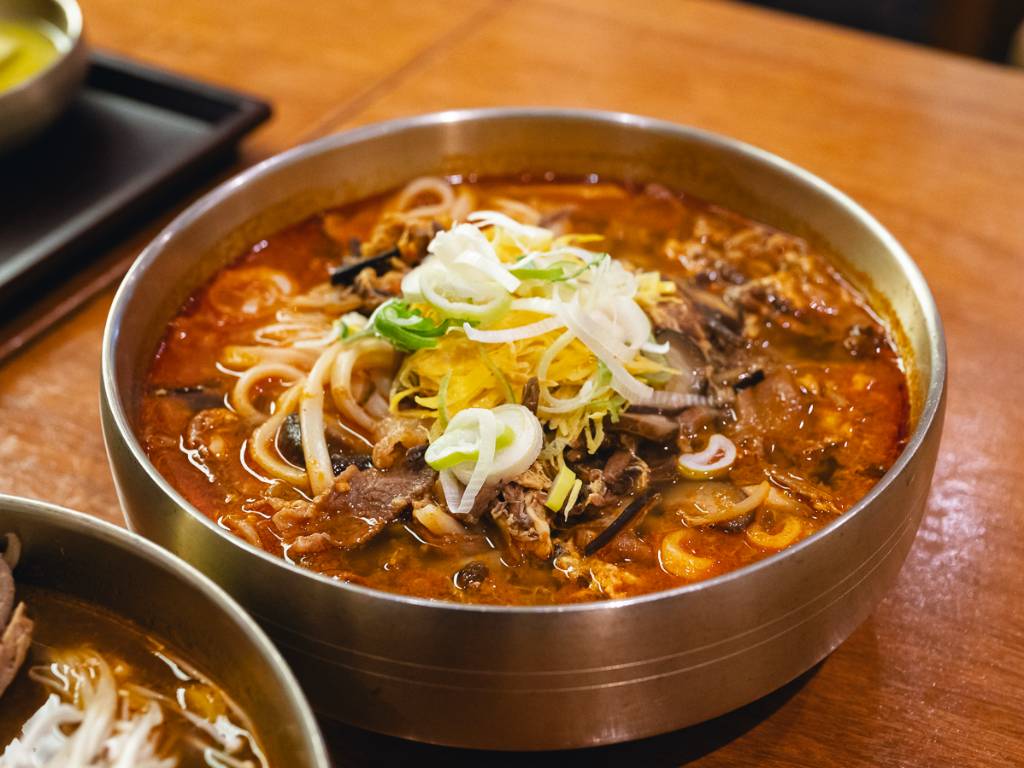
Both broths tasted clean, while being mildly spiced and there was barely any cloudiness or gameyness in the soups.
The pork broth tasted a little nutty, owing to the use of perilla powder, while the yukgaejang had a slightly earthy flavour from the added fernbrake.
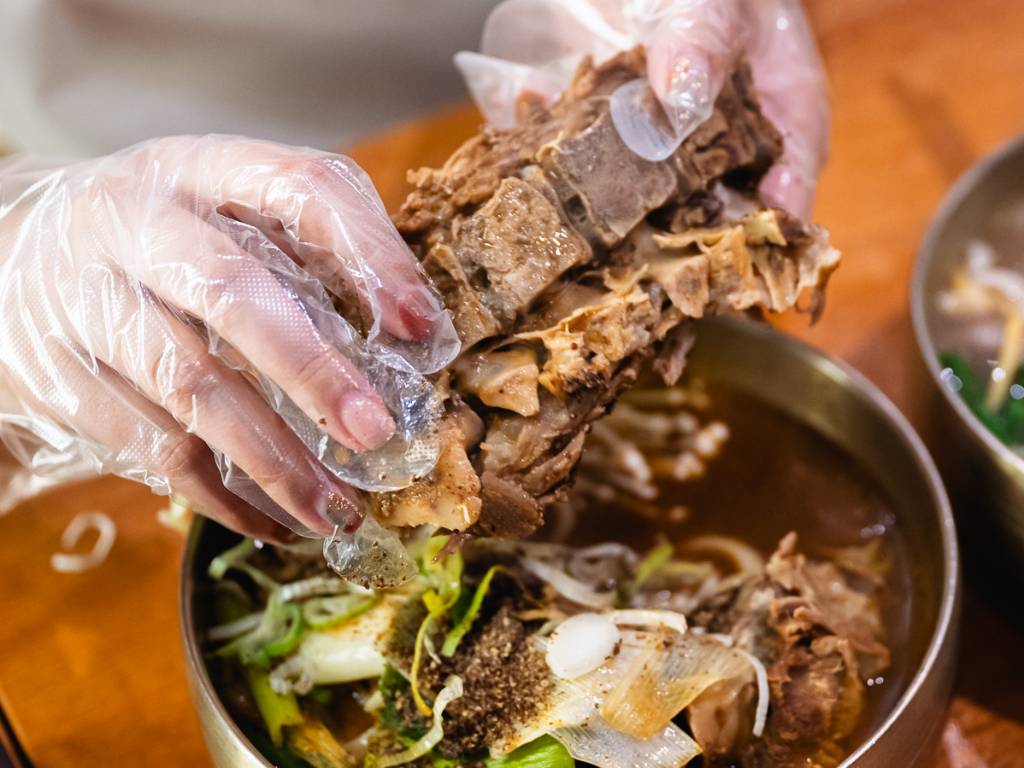
It bears mentioning that the most eye-catching of the lot is the pork version, though, and one you’d want to get, if you want that shot for the ‘gram.
The bowl comes with two big chunks of pork backbone, which hold soft morsels of meat in between — getting to them can be quite a task, but it’s made easier with the disposable gloves that are readily provided.
Once the big items are out of the way, it’s time to enjoy the real star of the dish, the knife-cut noodles: Each strand is cut just right — not too thin, not too thick — and cooked al dente, with a firmness that holds their own, even one takes a while to get to the noodles.
Though the broth and ingredients are only added on top of each bowl of noodles just before serving (as opposed to being cooked in with the broth), it surprised us how much flavour it takes on in that brief period of time.
And that probably sums up the appeal and beauty of this seemingly simple dish, which has not only won the hearts of Koreans, but increasingly Singapore diners — uncomplicated, easily adaptable, yet downright satisfying.
For more ideas on what to eat, check out Song Gye Ok, the newest chicken K-BBQ spot in town at Telok Ayer, or grab some buns from Standard Bun, a pop-up by the viral mocha bun bakery from Korea.



